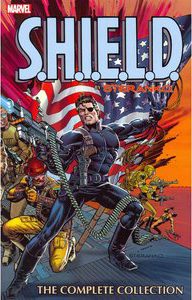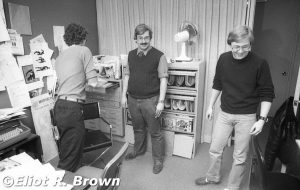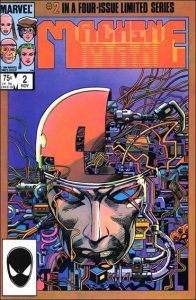Elephant’s Memory
Tom had an elephant’s memory for who had what books or who could spare some time. If a perfect match between artist and writer or penciler and inker could be had, he would rap out names and ideas. For example, there was the case of Assistant Editors’ Month, with the quaint notion that when all the Editors tootled off to frolic at the 1984 San Diego Comic Convention, we dopey assistants would pull pranks and fool with the books. The publishing schedule told us that I would be responsible for some kind of silliness in the books, such as appearing in the book as a character, to do some kind of hilarious mayhem.
In particular, in Amazing Spider-Man, I think we were in the middle of some main character dying and for me to show up, maybe providing some comic relief, would be in poor taste. But this was early in the game and Amazing was running a back-up story. Tom looked over to suggest that legendary writer, Roger “Sterno” Stern, had this really touching story that wouldn’t really fit in the normal run of books. In fact, it had been lying fallow for a long time, but Tom remembered it. He pulled the script out and handed it to me. I read it, blubbered like a child – and if you can read “The Kid Who Collects Spider-Man” and keep your composure, check for vital signs — and sent it hurtling down the pipe to the best guys for the job. Penciler sublime Ron Frenz and inker-who-needs-no-introduction Terry Austin. Everyone loved a nice 8-page back-up for a little extra scratch. Despite the boards coming back tear-stained, these guys were pros and the story still stands out today.
The book it appears in, ASM #248 is on the Ten Best Comics Of All Time list, selected by on-line readers of Marvel’s site, to be part of its 75th Anniversary Omnibus. Alas, before I could have anything further to do with it, other than launching that little ship, I was trundled off to fabulous Editrix, Louise Jones at the coal-face in the X-Book Editorial Offices. I was replaced by Lean and Hungry Look Bob DeNatele. But be it known here, it was Tom DeFalco’s nursing along of that wonderful Sterno script for “about a year” that allowed its recognition to happen.
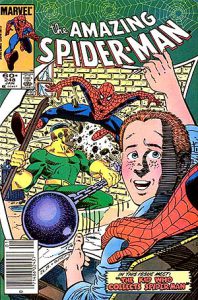
Then, a year or so after that, Weezie Jones (sage Editrix and writer, Louise Jones, incidentally also famous for being married to astonishingly talented creator Walt Simonson—though it is hard to say which side of the powerhouse team was more famous before or after the Comic Marriage of the Century…) was going to shake off the dust of that editorial office and go freelance. Tom offered to take me off of Weezie’s hands. I was daffy enough to think I should stay in editorial and see—perhaps—if I got some more experience… was a little better at assisting… I might one day soon become a real editor! I was, after all, in the X-Men office already. I had jumped from the Spider-Line to the X-Line—high to highest (as far as sales went—don’t argue about characters). How far could it be to becoming editor of those books? (Yes, such was my delusional state, I really—quietly—thought that!) Weezie, in the kindest act of almost anyone to me at Marvel, gave me her best eye-blink-in-Morse-Code advice, saying that I should “really” take Tom’s offer. I was pretty slow back then but it sunk in and off I went to work with Tom.
Tom DeFalco had been promoted to Executive Editor. A slot created just below the Editor In Chief position and above the Editors. No one knew what that title meant, especially Tom. He would always claim to be “making up his job” as he went. Marvel had never had such an in-between job. Only years later could one see that just as Jim Shooter as Editor In Chief was a buffer between Editorial and management, that Tom was a buffer between the EIC and Editorial/Production. But I was not quite Tom’s assistant either, I too was given a title that had never been before: Special Projects Editor. And, better yet, I was to report to Tom AND Jim Shooter as well as – former crackerjack writer/penciler, Bob Budiansky, Group Editor (another mystery title!). Thus I had three, top-of-the-heap and very possessive, bosses. Each thought I belonged to him! But I preferred dealing; no, coping… ahhh… working with Tom.
During this period of time, we were yakking about how cool Steranko’s S.H.I.E.L.D. run was. I may, >keff, keff< have been the one to have said, waitaminnit! We can do any special projects we want, right? Tom agreed. So let’s reprint all those books! And we did—despite finding that there were fewer all-Steranko books than our rosy memories suggested. I am very proud of that reprint. Tom was delighted for an excuse to call up and get work out of, The Man, The Myth, The Legend: Jim Steranko.
Another Big Rolodex moment for Tom was when I was Special-Projecting some national ads (advertising was a necessary ill of comics, as I understood it a single “national” ad – one whose company sold junk nation-wide–could offset all of the art & editorial costs of a book). I was in Tom’s office, belly-aching about the account exec, a really nice fellow for an “upstairs” type, but who was just not “comics.” When I mentioned that the ad was for Capt’n Crunch, Tom lit up. Ron Frenz was crazy for the cereal and the characters. And indeed, he did an amazing likeness of the good Captain, as seen on the box art.
In another inspired bit of “casting” –I could not “see” who could handle doing giant images of the anthropomorphic M&M characters. In fact, it was harder yet, because then I needed to integrate these monsters with a rendered version of the food’s logo (ahem, in the days well before any digital anything). Tom responded, “Oh yeah, John Costanza can do all that.” Costanza was known as a top-flight letterer at DC Comics, but apparently had spent plenty of time doing ad art around Tom. Turned out he was a terrific artist in his own right.
And now, when flipping through your stacks of middle-80s collectibles, you know who was responsible for getting the best look for oddball non-comic characters that litter the non-comic end of the books. Tom DeFalco!
Speaking of flipping through stacks of collectibles—one fine afternoon Tom and I were lounging around the office when the first Teenage Mutant Ninja Turtles showed up! Well, we had a good time with that! Anyone who knew comics then could see that creators Eastman & Laird were doing a send-up of Frank Miller’s Ronin. Also eventually, some of Frank’s run on Daredevil. I believe dear departed Addie Blaustein was also in the room and we three were sick with laughter. The cheek of these mountebanks! I mean really! Now of course I have spent my fair share of digging through my stacks of books looking for that #1…
One of the most excellent “team ups” to occur at Marvel was when the offices were relocated within the building. For a 2-month period, sometime around 1992, everyone was shoveled downstairs to the Fourth Floor while the Tenth and Eleventh Floors were scraped to the bare walls and renovated. Mark Gruenwald had been promoted to Executive Editor and Tom had been Editor In Chief for a while (Jim Shooter had exited the company in 1986). They shared a very nice, corner office space. There was plenty of room for both desks and couches—unusually comfy by Marvel standards. That Odd Couple pairing continued when Marvel returned to the Tenth Floor. Gruenie was very happy about it despite that office space being a little tighter than what the corner office had been on 4.
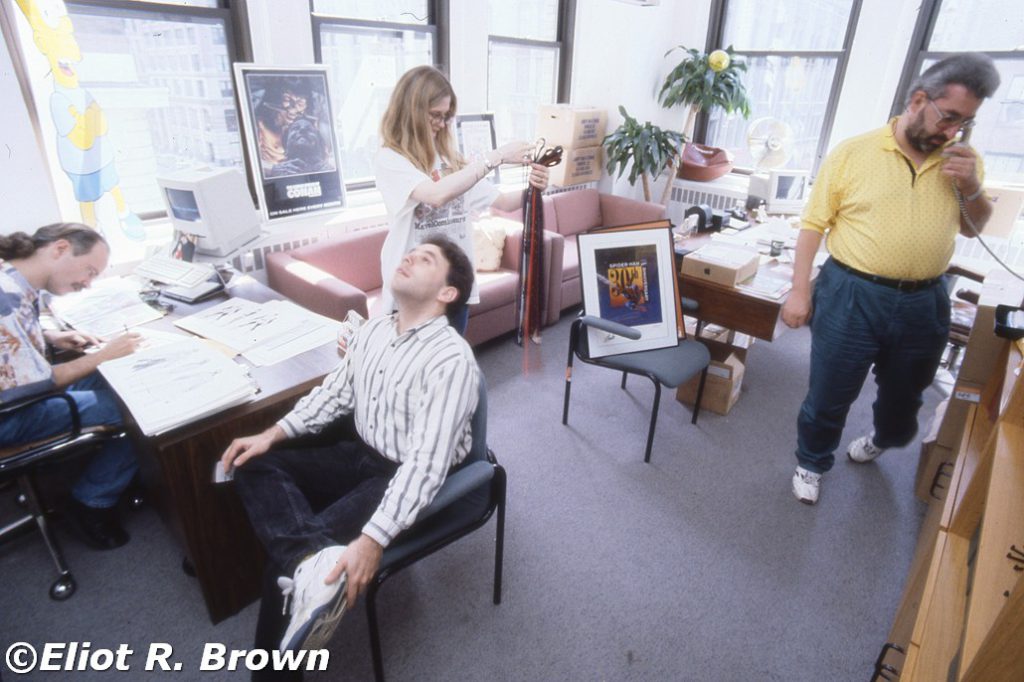
High Finance
Unlike any other comic professional or freelancer that I ever got to know, Tom was the only person who seems to have invested any of his income. Tom was the first person in my life to utter the word “Fannie May” (Federal National Mortgage Association) and “Freddie Mac” (Federal Home Loan Mortgage Corporation) in my presence. Of course, we all have heard of these institutions today, as they are constantly in the headlines. Back in 1983, they were obscure.
Speaking of big-businessy things, was Tom’s insight into a future “corporatocrasy.” New as I might be to the world of high financial conspiracy theories, t’was ho-hum old-hat ideas for Tom! Tom wrote the unusual Machine Man Limited Series (1984) with just such a sub-text. He blithely explained to me that he expected an array of gigantic corporations to be running the world really soon.
Google “Machine Man Limited Series” to see for yourself (ahem—you see what I did there?).
The series is interesting for many reasons. The “word on the street” was that Sublime Creator, Legend and tedibly British person Barry Windsor-Smith needed to make some quick cash for whatever purposes mad-genius creators do with money—all he wanted to do was ink. Barry’s ink rate was tippy-top for the times—easy money! I don’t know how Tom settled on Machine Man (that perfect demonstration of Jack Kirby’s ability to side-track one story with something so demented, “it just might work!” For some reason, Machine Man appeared in his comic adaptation of movie masterpiece 2001: A Space Odyssey. Only Jack knows…). Tom had been hip-deep in Spider-Man-ania for a long time, editing and then writing. Perhaps he needed a break from people and turned to this most human of robot. The late, great Herb Trimpe did his usual lean and insightful pencils.
Now, when possible back in the day, the script was lettered right on the boards, integrated as a part of the pencils/artwork. The inker would then ink around those word balloons and sound effects. The more relaxed time constraints of a limited series meant it was easy to follow that old plan. Joe Rosen, Letterer Extraordinaire, diligently lettered Tom’s script over Herb’s pencils. Then this was sent off to Barry for his inks.
Did I mention that Barry was a mad-genius? When the boards came back, we eagerly paused in our workaday plunge to drink in new Barry inks, always an office-stopping event. Oddly, the boards had a checkerboard look of fresh “correction white” with ink “sitting” on top. Why so many mistakes? Did Barry make mistakes?
No. Where the art didn’t serve the story, or the script didn’t either—in Barry’s estimation—Barry re-penciled the story and inked over that new art and often the lettering. Where he needed to eliminate the lettering and such, he used the artist’s friend, Pro White. Pro-White left a shiny surface behind that would cause inks (or fine-tipped markers, also used on this project) to “sit” on top in a vulnerable state. Barry retold some of the story visually, causing Tom to re-write things so they would fit in the new, smaller area left to him. And Herb relaxed in his upstate NY, Kerhonksen Studio, probably whittling daggers or putting together pikes.
Marvel Comics is a place where “seldom is heard, a discouraging word” but there were a few uttered during that project. Despite the troubled birthing, the MM limited series stands out as one of the higher heights of imagination and only such a meeting of strange minds could do it. When the House Of Ideas stood back and let some creativity flow—no matter how awkward that might be (Herb wasn’t crazy about his pencils being re-worked and Barry easily worked twice as hard, three times as hard for his “quick” cash) – the results can stand heads above the norm for decades to come.
Along the same idea of Tom inserting “real world” concepts into comics. When Tom was writing about Silver Sable, a female “Kingpin”-like character in Spider-Man’s universe, he introduced the idea that criminal organizations would have medical insurance and even retirement funds (in the unlikely event one lived to collect!). This was just dropped in, matter-of-factly, in the stream of a story. One of the many casual bits of insight that Tom scattered throughout his work.
Tom Interviews Me, Sort Of
During the headlong dash of the Official Handbook of the Marvel Universe, Tom guest-wrote a Bullpen Bulletins column. He decided to interview the three on-staff principals of that effort – easy enough since he was sitting in for one of those principals who normally wrote it and we were sitting within arm’s reach. Instigator of the MU series and Editor Mark Gruenwald, his worthy Assistant Mike Carlin and finally contributor and typesetter of the first entire 11 books, also Tom’s Assistant: me.
We jammed into his/our tiny office and plastered him with non-stop jibber-jabber. How Tom turned this into the print version below is just one of those miracles of outright lying. Of note: Tom is left-handed so watching him scribble even more furiously that time was a treat!
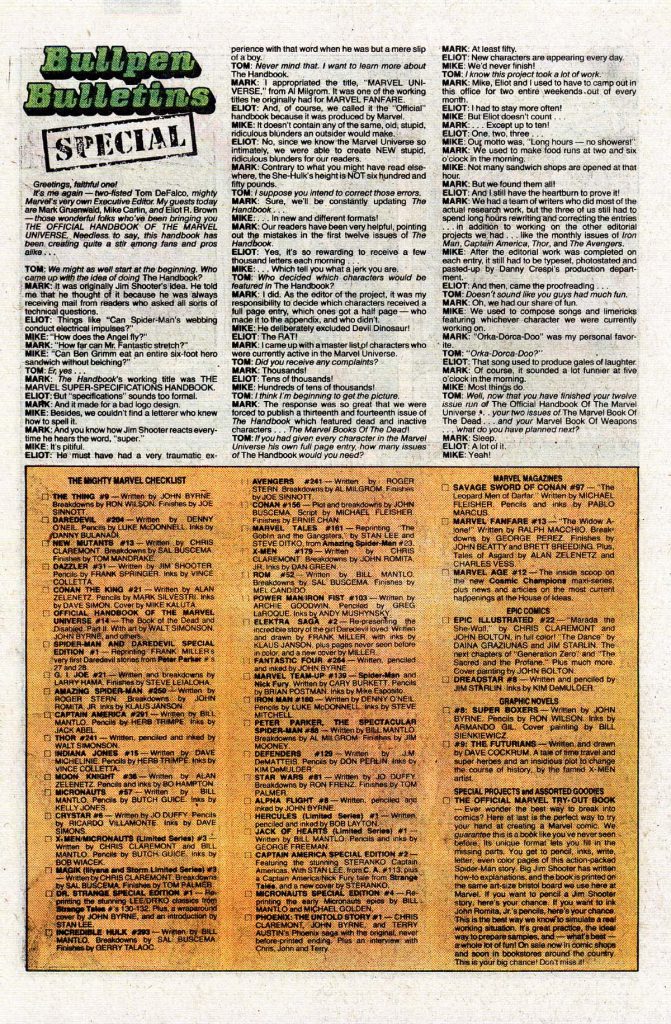
Next up, in part 4:
Tom’s Deepest Secrets, California 1984, Not-So Secret Wars!
